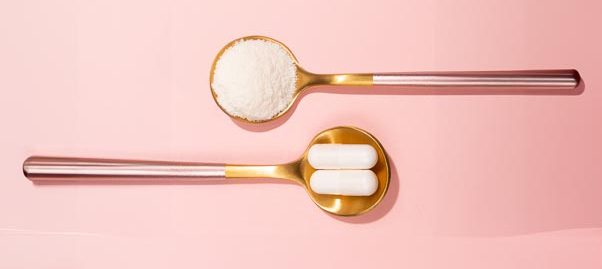
Is collagen the road to younger skin?
Jennifer Aniston and Kate Hudson swear by collagen, and have done so for years.
While no stranger to dermatologists, estheticians and beauty experts worldwide, the recent hype around collagen has truly put it on our radars. In 2023, the global collagen market was estimated to be worth US$5.1 billion. That figure is set to become US$7.4 billion by 2030.
Such quick growth in popularity can be offputting, as we try to sidestep the truthful beauty trends from the hoaxes. Rest assured, studies and experts have proven that yes, upping collagen intake has benefits. Yet, it is still a relatively new trend, and there is always more research to be done. Found in powder, gel, and capsule form, collagen is easy to introduce into a morning or nightly routine, through smoothies, skincare, or simply swallowing a pill. Taking such supplements is a non-invasive way to maintain that youthful glow for longer. Based on research, it is best to consume between 2.5 and 10 grams daily, follow the guidelines, and always be precautionary.
Looking at the benefits
A protein which strengthens and provides support to bones, skin, nails, hair, cartilage, ligaments, and tendons, collagen is the main component of connective tissue in the body and makes up 80 percent of our skin. It has also been found to enhance gut health.
As we age, the body’s natural collagen production begins to decline, and rapidly too. From the mid-20s onwards, it will decrease by one to three percent annually, depending on lifestyle habits such as UV exposure and stress levels. Collagen supplements work by slowing this decline down.
There are other ways you can increase collagen production through ingestion, without taking supplements or powders. Victoria Beckham eats fish daily, often choosing salmon after her dermatologist advised her of its benefits. Salmon contains fatty acids omega-3 and omega-6, which help to stimulate collagen production.
Breaking it down
In terms of beauty, increasing collagen intake supports strong nails, healthy hair, and skin elasticity and moisture. Countless terms for collagen, each with different benefits, can make it difficult to wrap your head around.
There are three types of collagen: Type I, II, and III.
Then, there is marine, bovine, and porcine collagen, which come from fish, cattle, and pigs respectively, and chicken. Most often, collagen is a by-product of the meat industry, with bovine collagen derived from cowhides as an example.
Type I: Overall body collagen, making up 75-90% of that found in organs, bones, ligaments, skin, hair, and nails, and has been dermatologically proven to be the best collagen for skin and beauty. It is mostly derived from marine collagen, yet can be found in porcine and bovine collagen.
Type II: Chicken collagen and bovine collagen from cartilage create Type II collagen, and are best for joint and arthritic pain, totalling 50-60% of protein in our cartilage.
Type III: Collagen is most common in body tissues with elastic properties and fibrous protein, and is a major structural component in hollow organs. It is often found in association with Type I collagen.
Vegan collagen supplements have also entered the market recently. However, collagen is a product of animals, so vegan collagen does not exist, although vegan alternatives can offer similar benefits to collagen.
Lately, collagen banking has entered the beauty atmosphere. Labelled the “secret to looking younger for longer,” by Vogue Scandinavia, it is a process which leans on skincare like serums and microneedling, supplements, vitamin C, and sunscreen to produce and preserve collagen while it is still being made.



